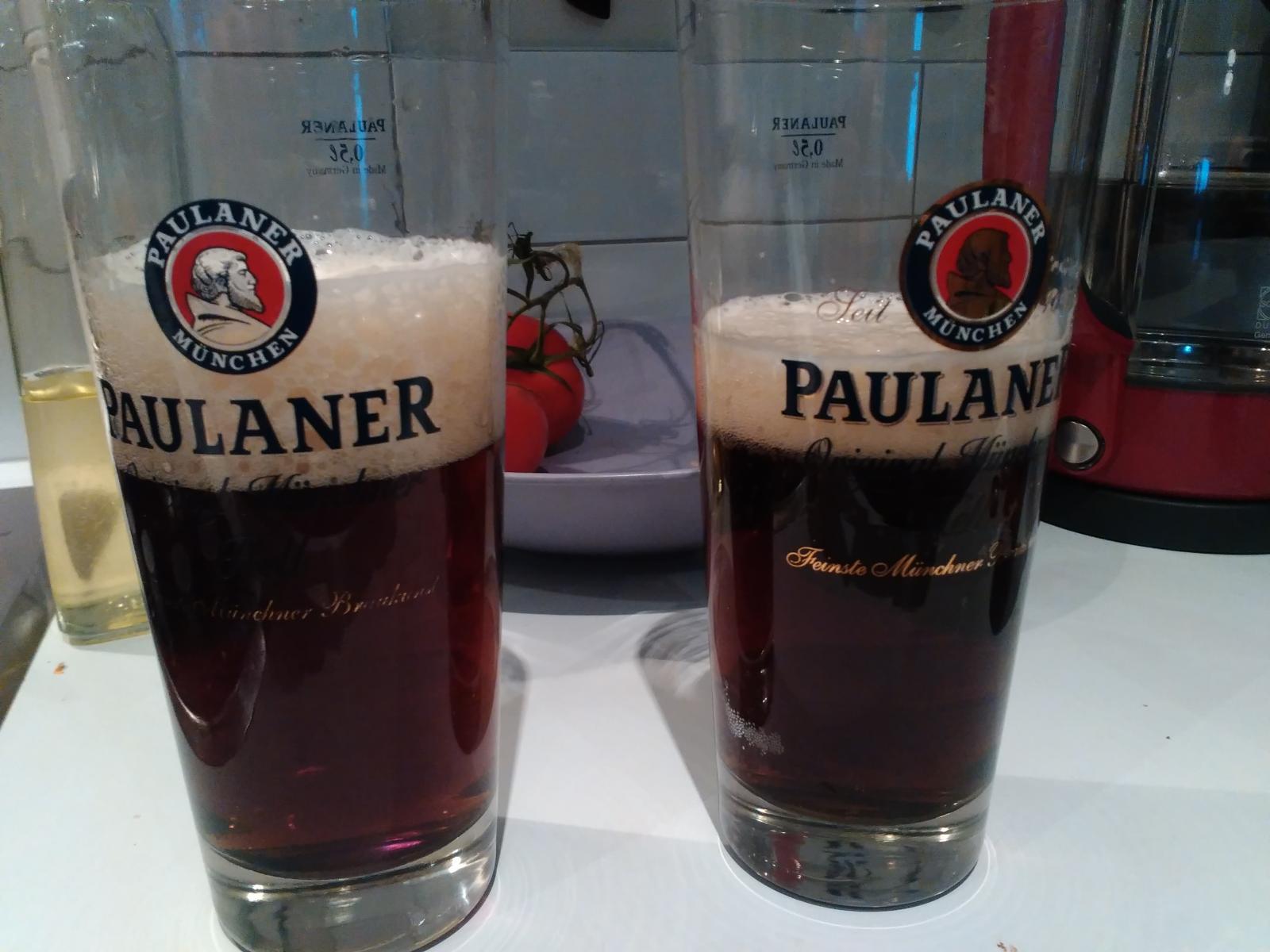Soooo, long story short I have been experiencing this malty rich flavour in my brews (mostly lagers) that I can't quite seem to pick, and I thought be the "sherry" flavour that people talk about regarding oxidation.
Except I don't know what oxidation tastes like as I don't regularly eat wet cardboard so I thought it would be good to do a little experiment and find out first hand.
So I bottled a 1.035 brown ale a couple of weeks ago. This was a bit of a "leftovers" batch made from frozen RIS 3rd runnings and some frozen starter wort I had on hand. I'll say now it's not my best work to date, but I figured it didn't have any strong flavours to get in the way of the test.
On bottling day I took one bottle and with my thumb over the top shook the thing like my life depended on it. Then removed my thumb to let in fresh O2 and shook it again. Repeated this for a couple of mins, then capped the bottle about 3/4 full so there was a crazy amount of headspace. It was total beer abuse.
Tonight I did a blind tasting. Got the kids to serve me blind and I had a taste. I was expecting to get hit by wet cardboard, or possibly sherry to verify my lager off-flavour.
No such luck. Both samples tasted exactly the same to me. Clean sample had better head on it but that was the only diifference I could pick.
- So either my beer-handling process is so bad that the whole batch was oxidised and shaking the hell out of one bottle made no difference.
- Or my palate is so bad that I can't taste the difference between a clean beer and a heavily oxidised sample.
- Or oxidation somehow isn't apparent 1.035 brown ales with minimal hopping.
- Or oxidation needs more than 2 weeks to manifest itself as an off-flavour.
- Or there was something else flawed with my testing logic.
- Or oxidation is an imaginary boogeyman that is used to scare new brewers.
I'm not saying that anything conclusive can be drawn from this. All I'm saying is that I can't taste the difference between these 2 beers, which are identical aside from one being very carefully handled at bottling time and the other one agitated to bring in as much O2 as possible.
Clean sample is on the left. I'm gonna repeat this on my tasty simcoe/amarillo pale ale which has 8oz of hops and see what happens there.

Except I don't know what oxidation tastes like as I don't regularly eat wet cardboard so I thought it would be good to do a little experiment and find out first hand.
So I bottled a 1.035 brown ale a couple of weeks ago. This was a bit of a "leftovers" batch made from frozen RIS 3rd runnings and some frozen starter wort I had on hand. I'll say now it's not my best work to date, but I figured it didn't have any strong flavours to get in the way of the test.
On bottling day I took one bottle and with my thumb over the top shook the thing like my life depended on it. Then removed my thumb to let in fresh O2 and shook it again. Repeated this for a couple of mins, then capped the bottle about 3/4 full so there was a crazy amount of headspace. It was total beer abuse.
Tonight I did a blind tasting. Got the kids to serve me blind and I had a taste. I was expecting to get hit by wet cardboard, or possibly sherry to verify my lager off-flavour.
No such luck. Both samples tasted exactly the same to me. Clean sample had better head on it but that was the only diifference I could pick.
- So either my beer-handling process is so bad that the whole batch was oxidised and shaking the hell out of one bottle made no difference.
- Or my palate is so bad that I can't taste the difference between a clean beer and a heavily oxidised sample.
- Or oxidation somehow isn't apparent 1.035 brown ales with minimal hopping.
- Or oxidation needs more than 2 weeks to manifest itself as an off-flavour.
- Or there was something else flawed with my testing logic.
- Or oxidation is an imaginary boogeyman that is used to scare new brewers.
I'm not saying that anything conclusive can be drawn from this. All I'm saying is that I can't taste the difference between these 2 beers, which are identical aside from one being very carefully handled at bottling time and the other one agitated to bring in as much O2 as possible.
Clean sample is on the left. I'm gonna repeat this on my tasty simcoe/amarillo pale ale which has 8oz of hops and see what happens there.














![Craft A Brew - Safale S-04 Dry Yeast - Fermentis - English Ale Dry Yeast - For English and American Ales and Hard Apple Ciders - Ingredients for Home Brewing - Beer Making Supplies - [1 Pack]](https://m.media-amazon.com/images/I/41fVGNh6JfL._SL500_.jpg)











































